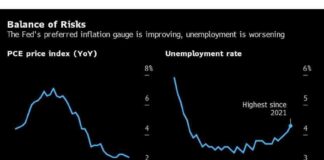Republican vice presidential nominee JD Vance recently made a controversial claim regarding immigration statistics during an appearance on CNBC’s “Squawk Box.” Vance, who is running alongside former President Donald Trump, accused Vice President Kamala Harris of allowing 25 million illegal aliens into the United States. However, a fact-check reveals that Vance’s numbers are grossly exaggerated and not supported by official data.
Debunking JD Vance’s Immigration Claims
According to data from U.S. Customs and Border Protection and estimates from various government agencies and organizations that monitor border crossings and asylum claims, Vance’s assertion that Harris is responsible for 25 million illegal immigrants in the country is unfounded. It is crucial to examine the actual figures to provide a more accurate perspective on the situation.
The Department of Homeland Security’s Office of Homeland Security Statistics estimated in April that there were approximately 11 million unauthorized immigrants residing in the U.S. as of January 1, 2022. This number represented a decrease from 11.6 million in 2010 but an increase from 10.5 million in January 2020. Similarly, the nonpartisan Migration Policy Institute reported in March that there were about 11.2 million unauthorized immigrants in the U.S. in 2021, up from 11 million in 2019.
Furthermore, the Pew Research Center’s July estimate placed the unauthorized immigrant population at 11.0 million in 2022. These figures are significantly lower than Vance’s claim of 25 million illegal aliens in the country, highlighting the inaccuracies in his statements.
CBP’s Encounter Data
CBP reported nearly 10.2 million total encounters nationwide from February 2021 through July 2024. However, it is important to note that many of these individuals were turned away, with nearly 2.5 million expulsions occurring under Title 42, the pandemic-era immigration restrictions that ended in May 2023. Additionally, a single encounter does not necessarily equate to one person, as some encounters may involve individuals who had previously attempted to enter the U.S. within the past year.
Impact on Communities
During his appearance on CNBC, Vance referenced the impact of immigration on communities like Springfield, Ohio, where he claimed that 20,000 Haitians had arrived, leading to unaffordable housing costs and economic strain. However, it is essential to consider the broader impacts of immigration on local economies and labor markets.
Recent findings from investment firms such as Goldman Sachs have indicated that immigration can have a positive effect on the U.S. economy and labor market. Contrary to Vance’s assertions, immigration has been shown to contribute to economic growth, job creation, and cultural diversity in many communities.
Vance’s choice to highlight Springfield, Ohio, in his remarks is significant, as the city has been the subject of baseless far-right conspiracy theories about Haitian immigrants stealing and consuming residents’ pets. These unfounded claims, perpetuated by both Trump and Vance, have fueled xenophobic rhetoric and misinformation about immigration.
Addressing Misinformation
It is crucial to address and correct misinformation surrounding immigration statistics and their implications for local communities. By relying on accurate data and evidence-based analysis, policymakers and the public can make informed decisions and engage in productive dialogue about immigration policy and its impacts.
In Conclusion
JD Vance’s misleading immigration statistics have been debunked through an examination of official data and expert estimates. It is essential to fact-check political statements and hold public figures accountable for spreading inaccurate information. By promoting transparency and accuracy in discussions about immigration, we can foster a more informed and constructive dialogue on this complex and multifaceted issue.






















